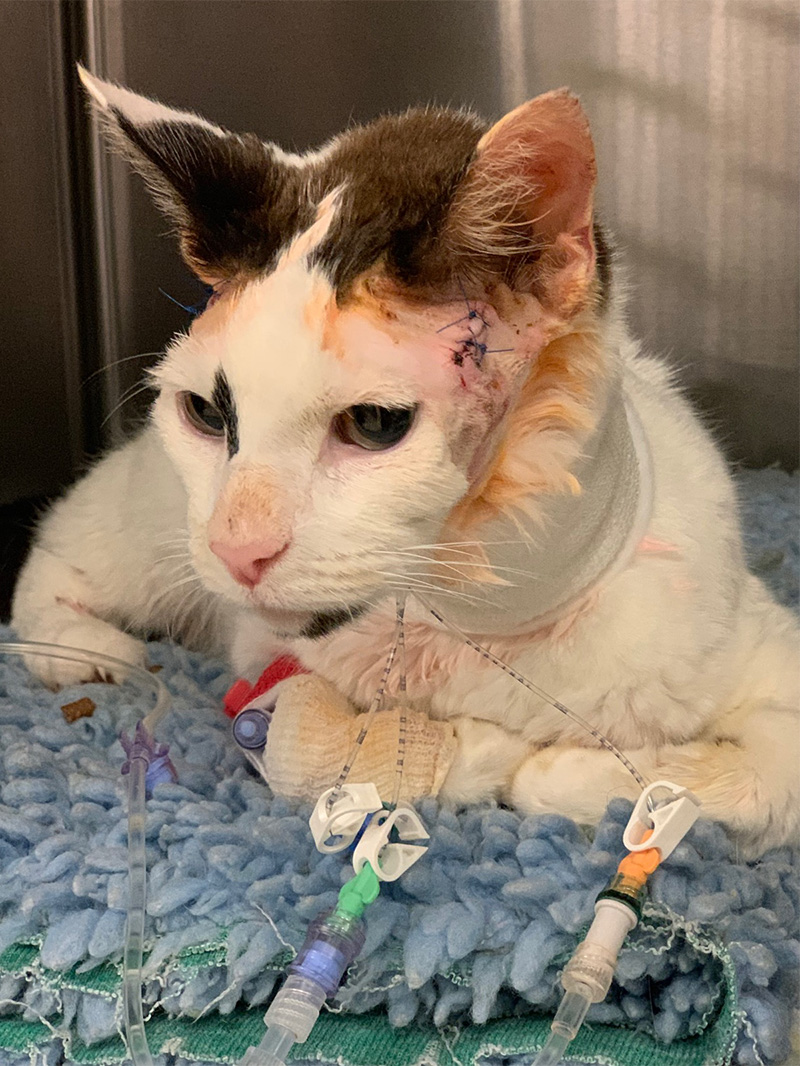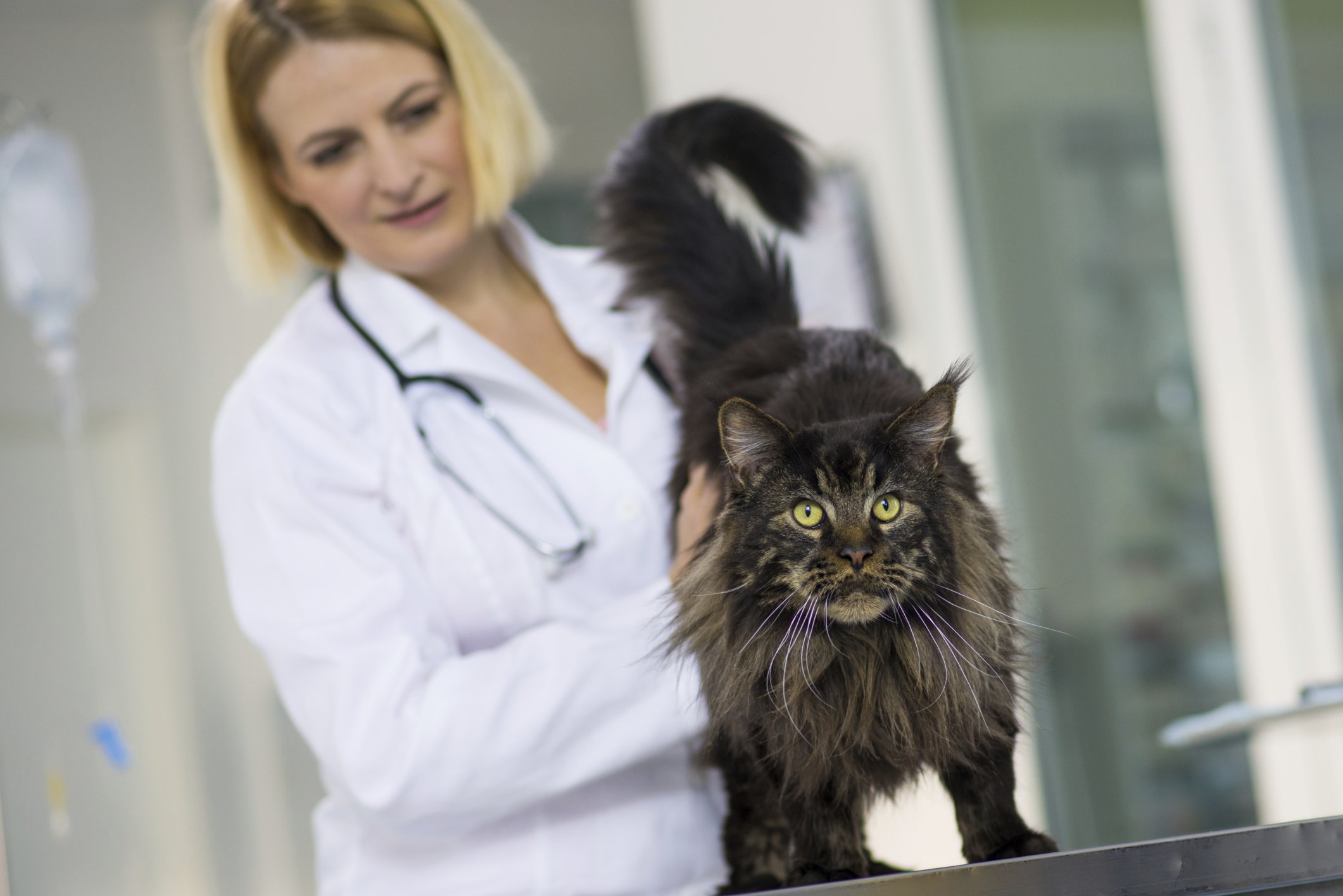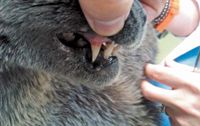acromegaly in cats prognosis
Survival time 8-30 months. The earliest witnessed signs tend to be those of unregulated diabetes mellitus.

Acromegaly In Cats The Veterinary Nurse
Chronic kidney disease neurological signs or euthanazed due to painful polyarthropathy.

. Congestive heart failure renal failure Kidney. Acromegaly in cats is mainly caused by the presence of a pituitary adenoma that is a non-malignant but productive tumor responsible for the overproduction of growth hormone. Polyuria and polydipsia as well as nocturia and urinary incontinence.
In the following article well tell you more about acromegaly in cats. Hypertrophic cardiomyopathy changes in the heart muscle can also occur and can sometimes lead. Its a rare disease but unfortunately it can become quite serious.
In most studies at least 23 cats had improved symptoms and 50-92 had improved control of their diabetes. Other signs that acromegaly may be present include a broadened face growing paws and a protruding jaw or growing lengthening teeth and gums. One of the first signs or symptoms of Acromegaly is difficult to control diabetes and insulin resistance leading to very or even extremely high doses of insulin being needed to control blood glucose levels.
Acromegaly is a relatively rare condition caused by excessive hormone production in the brain or in mammary gland breast tissue. Acromegaly is an endocrine disease consisting of hypersecretion of growth hormone GH. This is most often caused by an abnormal growth or tumor in the pituitary gland and the hormones may vary somewhat.
Congestive heart failure renal failure Kidney. The prognosis for feline acromegaly varies and can be very difficult to predict for an individual cat. Acromegaly is characterized by chronic excessive growth hormone GH secretion by the pituitary gland.
Common symptoms associated with insulin resistance include weight loss despite a good appetite and increased thirst and urination. Most die of complications eg congestive heart failure Heart. Acromegaly in cats is a disease that mainly affects older cats mean age 10 years a predisposition has not been verified in any particular race but we know that a male subjects with poorly balanced diabetes suffer more.
Mild cardiac disease can be managed with diuretics and vasodilators. These often include unusual growths in the cats face abdominal enlargement and cardiomyopathy or. Excessive production of a hormone growth hormone in the brain creates a lot of problems for our furry friend.
The condition is oftentimes difficult to diagnose as the symptoms are. What are the symptoms of acromegaly in cats. Most affected cats eventually die of congestive heart failure chronic kidney failure or complications of the growing pituitary tumor.
J Feline Med Surg. In cats it is due to GH-secreting tumors of the anterior pituitary. Other clinical signs include stridor enlargement of the jaw and extremities lean weight gain and organomegaly heart liver kidney etc.
The prognosis for feline acromegaly varies and can be very difficult to predict for an individual cat. Morphological changes in the head and extremities of the limbs. The short-term prognosis in cats with untreated acromegaly is fair to good.
Acromegaly in cats causes multiple complications. Acromegalic cats also develop changes in their appearance such as enlargement of the jaw paws and abdominal organs. Definitive diagnosis can be difficult because of the gradual disease onset subtle clinical signs unavailability of relev.
Insulin resistance is generally controlled satisfactorily by using large doses of insulin divided into several daily doses. Body condition can range from normal to being overweight and an average body weight of 58 kg was found in a. Acromegaly can be treated with analogues of somatostatin.
The origin of this alteration in cats is the presence of a tumor in the pituitary gland. The average cat survived 25 months after SRT meaning that half of the cats lived a longer time and half lived a shorter time. Acromegaly occurs in older predominately male cats and is often associated with diabetes mellitus.
Acromegaly is a relatively rare condition caused by excessive hormone production in the brain or in mammary gland breast tissue. Insights into veterinary endocrinology. Acromegaly is a rare disease caused by an overproduction of the growth hormone GH.
It usually occurs in cats that are around 8-14 years old and males seem to be more commonly affected with it than females. Survival time 8-30 months. The longterm prognosis is relatively poor however and most cats die of.
Acromegaly in cats is mainly caused by the presence of a pituitary adenoma that is a non-malignant but productive tumor responsible for the overproduction of growth hormone. Excessive growth hormone in cats is also called acromegaly or hypersomatotropism. Feline acromegaly is most commonly caused by a functional pituitary tumor.
An essential differential diagnosis for the difficult diabetic. The earliest witnessed signs tend. Print off the owner factsheet on Acromegaly in cats Acromegaly in cats to give to your client.
Acromegaly should be considered in any diabetic cat with insulin resistance. Physical changes associated with feline acromegaly include increased body weight a broadened face enlarged feet protrusion of the mandible prognathia inferior increased interdental spacing organomegaly and a poor coat Figures 1-3. It is a somewhat rare condition which occurs when the cats pituitary gland located at the base of the brain grows a.
Feline acromegaly is also called feline hypersomatotropism. This tends to increase in size creating problems even at the local level. Acromegaly is a condition that comes about when something affects your cats pituitary gland and causes it to secrete more growth hormones than are necessary.
1 a subpopulation of these 59 cats was submitted for further tests in order to conclusively establish a diagnosis. Syndrome due to persistent excessive growth hormone GH secretion from pituitary adenoma Pituitary gland.

Feline Acromegaly The Keys To Diagnosis

Pioneering Hypophysectomy Treatment Reaches 100 Case Milestone

Acromegaly In Cats The Veterinary Nurse
Pharmacological Treatment With Cabergoline In Three Cats With Acromegaly

Insulin Dependent Diabetic Cat Veterinary Teaching Hospital Washington State University

Acromegaly In Dogs And Cats Sciencedirect
Overview Of Endocrine Diseases Animal Endocrine Clinic

Update On Feline Acromegaly Niessen 2013 In Practice Wiley Online Library

Diagnosis Feline Acromegaly Tufts Catnip

Acromegaly In Cats Kingsdale Animal Hospital

Acromegaly In Cats The Veterinary Nurse

Acromegaly In Cats The Veterinary Nurse

Feline Acromegaly The Keys To Diagnosis

Acromegaly In Cats Symptoms Diagnosis And Treatment

Tumors Of The Endocrine System Veterian Key

Acromegaly In Cats The Veterinary Nurse

